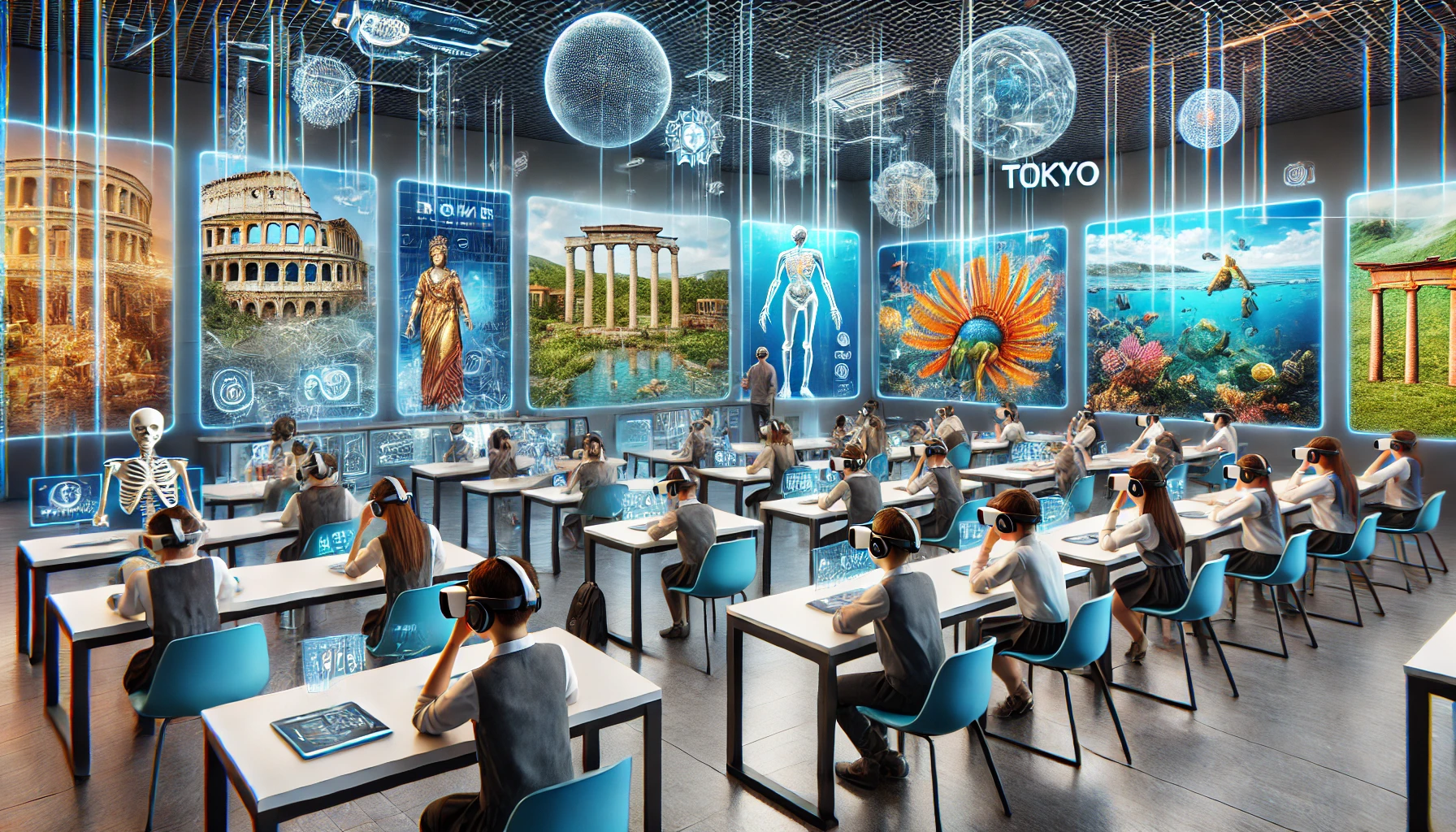The Future Classroom: Virtual Reality as the New Frontier in Immersive Learning

Welcome to the Future of Education – Now with VR Headsets
Gone are the days of chalkboards and overhead projectors. Today, we're stepping into a classroom where students don virtual reality (VR) headsets instead of flipping through textbooks. It's not just a sci-fi dream anymore—VR is making its way into classrooms, creating an immersive learning experience that's changing the way we think about education. Imagine walking through ancient Rome, dissecting a digital frog, or visiting the depths of the ocean, all without leaving your seat. It’s like a field trip without the permission slips.
From History to Science: Bringing Lessons to Life
VR doesn’t just make learning cool—it makes it memorable. Imagine history classes where students don’t just read about the fall of the Roman Empire but actually witness it unfold around them. Or biology lessons where students can explore the human body from the inside out, walking around veins and arteries like they're in a medical-themed amusement park. This is the power of immersive learning. By interacting with 3D models, simulations, and environments, students can grasp difficult concepts in ways that traditional methods struggle to match.
Cultural Exploration without Leaving the Room
VR opens up the world in a way that's never been possible before. Picture this: a classroom in Kansas, where students are exploring the streets of Tokyo, chatting with digital avatars of people in other cultures, or even experiencing a day in the life of a refugee. It’s not just about reading or watching videos—it’s about empathy and understanding, all while making geography and social studies a lot more exciting. And for students learning languages, VR offers the chance to practice in virtual environments that mirror real-life settings. Goodbye to boring flashcards and hello to ordering a coffee in Paris from your desk.
Why Teachers Are on Board—And Why They’re Still Nervous
Sure, VR sounds like a dream come true for students, but what do teachers think? For many educators, the idea of incorporating VR into the classroom is both exciting and a little terrifying. The potential for engagement and interaction is off the charts, but there are challenges, too. How do you ensure that the tech works smoothly? What about students who struggle with motion sickness? And, of course, how does a teacher maintain discipline when kids are busy navigating through the Great Wall of China in VR? It's clear that while VR is a game-changer, it still has a few wrinkles to iron out.
Cost and Access: Can Every Classroom Get a VR Upgrade?
The elephant in the room is cost. VR systems aren’t cheap, and while some schools are jumping on the bandwagon, others are left in the dust due to budget constraints. The technology itself isn’t prohibitively expensive for individual consumers, but when you multiply it by hundreds of students, plus the cost of software and maintenance, it can quickly add up. Schools in more affluent districts might have access to the latest tech, but what about underfunded schools? The question of equity in tech access is one that educators, policymakers, and parents will need to address.
The Future: More than Just Fun and Games
While VR in education might seem like all fun and games, the potential for deeper learning is huge. Imagine a future where medical students practice surgeries in VR before they ever touch a scalpel, or where engineering students design and test prototypes in virtual worlds. Even soft skills like teamwork and problem-solving can be honed in a VR setting, where students collaborate on complex projects or navigate real-world challenges. The possibilities are as vast as the virtual landscapes themselves.
So, Is VR the Classroom of the Future?
The truth is, VR is already revolutionizing the way we learn, and it’s only going to get bigger. It’s not going to replace teachers, but it’s definitely adding a new dimension to education. The ability to experience learning rather than just observe it is a game-changer. With the right balance of tech and traditional teaching, we could see a future where students are more engaged, more knowledgeable, and definitely more excited to come to school. But what do you think—will VR become a staple in classrooms, or is it just another passing tech trend?



